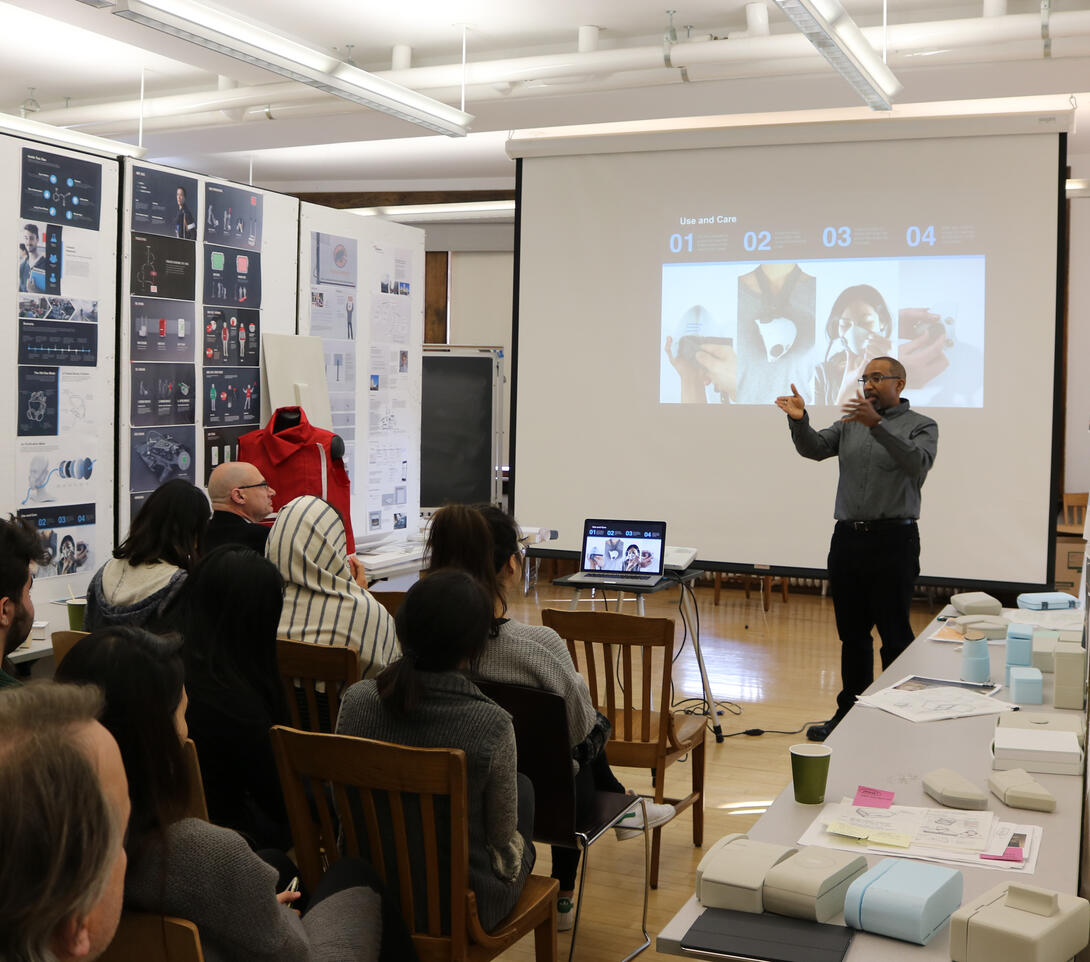
About Our Programs
Look around. Almost everything you experience physically, spatially, visually, or through interactions or services has been designed, including those by alumni of Carnegie Mellon University's School of Design.

Businesses and institutions continue to embrace the value of design because of its unique ability to reframe humanity-centered problems and provide creative contributions that drive innovation. As a result, the demand for design professionals has never been greater, and the potential impact on the world through design is limitless.
For nearly a century, the School of Design at CMU has advanced the study of the discipline and offered hands-on learning experiences that have firmly established the School as a leader in design education.
We excel at preparing successful graduates who have studied the design of communications, products, and environments at the undergraduate level; design for interactions at the master's level; and transition design at the doctoral level.
Our alums are placed in some of the most desirable positions in the field where they are leading, practicing, researching, or teaching design in small and large organizations worldwide. We are successful and respected because of our extraordinary faculty, students, and alumni — and our ability to adapt and remain at the leading edge of design education.
Design for interactions.
Design for interactions is an overarching theme that runs throughout our programs. Born out of research and teaching in the School over the past several decades, it remains a core component of how we approach design education today.
In response to the demands of our rapidly changing world, design for interactions reaches beyond form and basic function. Instead, it holistically considers the quality of design-mediated interactions among people, systems, and the built and natural worlds with the goal to leverage opportunities and help solve complex problems facing humanity.
School of Design Learning Pathways.
The School of Design programs and curricula, as well as the research and practice expertise of our faculty, are not only foundational to the essential traditions of design but also responsive to existing and anticipated changes in the discipline.
We believe the work of designers is essential to help address the escalating business, social, and environmental challenges we face in the 21st century. Our contribution — as a leading design school in the world to offer degrees at the undergraduate, graduate, and doctoral levels within a top-ranked multidisciplinary research university — is to prepare the next generation of designers who are capable of working within and across these challenges.
UNDERGRADUATE PATHWAYS: Our three tracks in our Undergraduate Program offer students the opportunity to select an area of specialty within the broad discipline of design. Students can choose to study the design of products (industrial design), communications (graphic design and screen-based digital interactions), and environments (physical spaces and related digital experiences).
GRADUATE PATHWAYS: The School of Design offers three programs of advanced study: the Master of Design (MDes) in Design for Interactions; Master of Arts (MA) in Design; the Masters of Professional Studies (MPS) - to which only current MA students can apply, and Doctorate (PhD) in Transition Design.
The MDes program enables students with a background in design to deepen their expertise in designing for a range of interactions. Through the study of systems thinking and use of design research to ethically identify and address unmet needs, students develop skills and knowledge that prepare them to tackle contemporary design challenges in insightful ways.
The MA program helps students with non-design backgrounds to expand their understanding of the field through an education in the fundamentals of design. After one year of study, MA students are prepared to integrate design into their native disciplines. Or, they may apply to continue their studies through the MPS or MDes program.
The MPS program is a two-semester program to which only MA students can apply. Courses required in the first year of the MDes program, except for Thesis Prep, comprise the curriculum. The MPS offers students a practical and attainable means of developing a strong, forward-thinking design practice.
Our PhD in Transition Design prepares future design leaders to envision and help design purposeful change in the world across a range of complex systems, from natural resources and policy to culture, economies, cities, and social movements.
Students in the School of Design are exposed to a broad curriculum and are encouraged to work collaboratively with peers from other disciplines across the university. They become “systems thinkers” who are able to see and solve complex problems in the context of a globally connected and interdependent world. This holistic, design research-based approach positions them to stand out among their peers.
These key factors shape our school and inform the thinking, methods, and responsible practice of designers who graduate from the School of Design.
The School in Brief
- We are one of only a few design schools in the world to offer degrees at the undergraduate, master's, and doctoral levels within a top-ranked multidisciplinary research university.
- We are small in scale with a low student-teacher ratio, enrolling approximately 225 students: ~160 undergraduates, ~45 master's, and ~20 PhD.
- Our students come from various backgrounds and are inspired by a wide range of motivations and career ambitions.
- We provide a deep yet practical education at the undergraduate level that prepares students for entry-level design positions or master's studies.
- We provide advanced knowledge and skills at the master's level for students who want to redirect or propel their careers forward.
- We prepare our PhD students to help transform complex systems and practices into more positive futures for humanity and the planet.
- Our students become "systems thinkers" who are able to see and solve complex problems in a globally connected and interdependent world.
- Students work collaboratively in transdisciplinary teams and bring a holistic, research-based approach to design.
- We acknowledge the social and natural worlds as the context for all design problems and solutions.
- We introduce an ethical mindset and practice through complementary studio, lecture, and seminar courses.